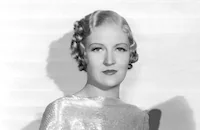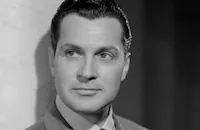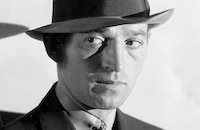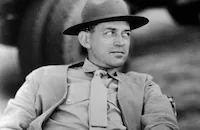I Take This Woman

Brief Synopsis
Cast & Crew
W. S. Van Dyke Ii
Spencer Tracy
Hedy Lamarr
Verree Teasdale
Kent Taylor
Laraine Day
Film Details
Technical Specs

Synopsis
Tortured by her unrequited love for Phil Mayberry, glamour girl Georgi Gragore decides to end her life by jumping into the sea. She is prevented from doing so by Karl Decker, a dedicated doctor who pulls her from the ship's railing. Upon docking in New York, Georgi finds her life empty and aimless, and decides to visit Karl at his East Side clinic, where he is beloved by all his patients. To renew her interest in life, Karl offers Georgi a job and soon finds himself falling in love with her. After the two hastily marry, Karl meets Georgi's wealthy uptown friends and begins to feel incapable of supporting her in the style to which she is accustomed. Consequently, when Dr. Duveen offers him a lucrative position in private practice, Karl gives up his clinic to treat wealthy hypochondriacs. Meanwhile, Georgi, haunted by her feeling for Mayberry, goes to see him at his apartment, where she realizes that she no longer loves him. When Karl discovers Georgi's visit, he flies into a rage and refuses to accept her explanations. Summoned to the hospital on an emergency, Karl discovers that a spoiled debutante has swallowed poison, and a misdiagnosis by the intern has resulted in her death. Angry and embittered, Karl refuses to cover up the scandal, throws away his partnership in the hospital and prepares to leave for China on a research expedition. To stop him, Georgi rallies his old East Side patients to convince him to return to the clinic, and in so doing, finally convinces him of her love.

Cast

Spencer Tracy

Hedy Lamarr

Verree Teasdale

Kent Taylor

Laraine Day

Mona Barrie

Jack Carson

Paul Cavanagh

Louis Calhern

Frances Drake

Marjorie Main

George E. Stone

Willie Best
Don Castle
Dalies Frantz
Reed Hadley
Charles Trowbridge

Natalie Moorhead
Syd Saylor

Edward Keane
Crew
Adrian
George Boemler
Lew Borzage
Hugh Boswell
Cedric Gibbons
Dick Green
Paul Groesse
Arthur Gutmann
Bernard H. Hyman
Bronislau Kaper
Bud Lawton
Charles Macarthur
Jay Marchant
James Kevin Mcguinness
Harold Rosson
Douglas Shearer
Lawarence Weingarten
Edwin B. Willis

Film Details
Technical Specs

Articles
I Take This Woman
Lamarr wrote in her autobiography Ecstasy and Me, "When [studio chief] Mr. [Louis B.] Mayer came up with the property that was to "make Algiers look like a small picture" it was I Take This Woman. When I look back on it all objectively I realize this picture was nothing more than a soap opera. Something you would see on daytime television today. But Mr. Mayer truly believed he had an important picture and I believed him. He signed the great Josef von Sternberg to direct, with the tip that I would thus become MGM's biggest star. Josef von Sternberg had just before made some of Marlene Dietrich's biggest pictures. I'll say for Mr. Mayer that when he believed in something he did spend. He hired Charles MacArthur, one of the town's most expensive script writers, for the screen play. He budgeted I Take This Woman at $1,500,000, which was big money in those days. He assigned the biggest names to support me Spencer Tracy and Water Pidgeon. His enthusiasm was catching. I foresaw another triumph."
All of the assembled elements seemed to guarantee a hit - except the script. Lamarr remembered "Von Sternberg himself read the script which Mr. Mayer thought was ready for the sound stages, and screamed that it was terrible. Finally Mr. Mayer allowed him to rewrite it. Von Sternberg was even critical of his own revision. He didn't feel the script was right yet. By now Mr. Mayer was getting impatient. I was getting all this publicity and he wanted to cash in on it."
I Take This Woman began production with a new director, Frank Borzage, and Mayer himself acting as uncredited producer, which meant he actually went on the set and tried to tell everyone how to do their job including Spencer Tracy. Still, the film wasn't working so production was shut down and the picture temporarily shelved. In the meantime Lamarr made Lady of the Tropics (1939) which was a flop, and Spencer Tracy was contractually obligated to make Stanley and Livingstone (1940) for 20th Century Fox.
Finally Mayer had had enough. "They didn't want me to make I Take This Woman. Well now we will make it", he told Lamarr. Hiring Woody Van Dyke (known in Hollywood as "one-take Woody") to direct, and replacing Walter Pidgeon with Kent Taylor, they shot the film in three weeks. "It was referred to around town as I Re-Take This Woman.
The problems didn't end there. On the set Tracy did not get along with Lamarr. As Bill Davidson wrote in his book Spencer Tracy: Tragic Idol "[Tracy] told writer Abby Mann years later he did not like Hedy. He thought she was taking advantage of her closeness to Mayer, and putting on airs of being overly prim. Says Mann, 'Spence told me, "I thought I'd fix Hedy one day. We had a scene where she had to sit on my lap. The night before we did the scene, I bought a big banana that wasn't ripe yet and was pretty hard. I slipped the banana down the front of my pants, and when Hedy sat down on it, she let out a scream and jumped about ten f*ckin' feet in the air!"
After all the fuss, I Take This Woman was 'much ado about nothing'. Frank Nugent in his February 16, 1940 review of the film summed it all up: "[...] The result is ersatz, a synthetic brew tasting more of the cooking than the stock, with a completely nonsensical plot, ridiculous characterization and motivation, and a final tableau reminiscent of a grammar school pageant in which a muslined Goddess of Liberty holds her arms in benediction over the grinning little representatives of Nations of the World."
"The goddess here is Hedy Lamarr, who, surrounded by a casting director's sheaf of East Side youngsters, appears at the door of the clinic to keep Dr. Spencer Tracy from taking the next boat to China and forgetfulness. Dr. Tracy (or Dr. Decker, as the script calls him) had decided, you see, that his enigmatic Russian bride never has been able to forget the fiery Phil Mayberry who once eloped with her to Yucatan and then, anti-climactically, remembered he had a wife. Actually, of course, Miss Lamarr's Mrs. Decker, after two solid hours of brooding over her love life, had just reached the staggering conclusion that Mr. Mayberry really meant nothing to her, that she loved Dr. Decker after all. But, by this time, Dr. Decker, who had been almost too mechanically perfect as the understanding husband for the first nine-tenths of the drama, elected to believe the worst and -. But why, oh why, go on?"
"It is altogether too much to expect that any cast could salvage anything from this potpourri of Gone with the Wind [1939], The Citadel [1938] and last year's galoshes. Mr. Tracy manfully does his best; Miss Lamarr obediently turns her face to the camera; Verree Teasdale rips out her lines with gallant obliviousness to the fact that wit sounds odd in a funeral chapel. I Take This Woman will go down in history as the most extensively operated-on film of 1938-39-40; unfortunately the patient died."
Producer: Louis B. Mayer, Bernard H. Hyman, Lawrence Weingarten
Director: W.S. Van Dyke
Screenplay: James Kevin McGuinness, based on the story "A New York Cinderella" by Charles MacArthur
Cinematography: Harold Rosson
Art Direction: Cedric Gibbons
Music: Artur Guttmann, Bronislau Kaper
Film Editing: George Boemler
Cast: Spencer Tracy (Dr. Karl Decker), Hedy Lamarr (Georgi Gragore Decker), Verree Teasdale (Madame 'Cesca' Marcesca), Kent Taylor (Phil Mayberry), Laraine Day (Linda Rodgers), Mona Barrie (Sandra Mayberry).
BW-97m. Closed captioning.
by Lorraine LoBianco
Sources:
New York Times: The Screen in Review: I Take This Woman by Frank Nugent, Feb 16, 1940.
Spencer Tracy: Tragic Idol b Bill Davidson
Ecstasy and Me by Hedy Lamarr

I Take This Woman
Quotes
Trivia
Production of the film started in October 1938 and had a troubled history. Director Josef von Sternberg quit because of artistic differences. Director Frank Borzage took over, but the production was shelved in early January 1939 for more than 10 months, when W.S. Van Dyke took over and practically re-shot the whole film, with many different cast members. One contemporary reviewer quipped the film should have been called "I Re-Take This Woman".
Jack Carson is credited onscreen but has only one short scene yelling in a subway. His voice is clearly dubbed, probably because he couldn't be at the retakes.
Notes
This picture was based on the unpublished original story "A New York Cinderella," by Charles MacArthur. According to news items in Hollywood Reporter, the film had a long and troubled production history. The film began production in October 1938 as A New York Cinderella. An October 18, 1938 news item in Hollywood Reporter notes that Josef von Sternberg (spelled Joseph von Sternberg in Hollywood Reporter) was assigned to direct and Walter Pidgeon was to play the second male lead (the role of "Phil Mayberry.") A 19 October news item adds Thurston Hall to the cast. A 22 October production chart lists Larry Weingarten as producer, Dick Green as assistant director, and Spencer Tracy, Hedy Lamarr and Pidgeon as cast members. Modern sources add that Louis B. Mayer intended to use this picture to mark Lamarr's M-G-M debut, and so hired Sternberg to give her the "glamour treatment."
A news item appearing on 7 November adds that Frank Borzage took over the direction from Sternberg because of a "disagreement concerning the manner in which the picture was to be shot." Sternberg was then assigned to direct Sergeant Madden. In the 12 November production chart that follows this announcement, the film is retitled I Take This Woman, Borzage is listed as director and Lew Borzage is listed as assistant director. A 17 December production chart lists Bud Lawton as photographer and adds Ina Claire, Adrienne Ames and Laraine Johnson (who is billed in the onscreen credits as Laraine Day) to the cast. Modern sources note that Ina Claire was to play "Madame Maresca," the role taken over by Verree Teasdale, and Adrienne Adams was to play "Linda Rogers," the role taken over by Day. Modern sources add that Fanny Brice was to play the role of "Madame Maresca" in the Sternberg version. The film was still in production on January 25, 1939 when a news item in Hollywood Reporter noted that twelve-year-old Johnny Walsh was added to the cast. His name does not appear in the credits of the final film, in reviews or the CBCS, and his appearance in the completed film has not been confirmed.
On December 2, 1939, a news item in Hollywood Reporter announced that I Take This Woman would resume production on 4 Dec, with W. S. Van Dyke II as director, Hugh Boswell as assistant director and Harold Rosson as photographer. The cast then included Tracy, Lamarr, Kent Taylor (replacing Walter Pidgeon), Verree Teasdale, Dalies Frantz, John Shelton, Rosina Galli and Charles Trowbridge. An December 8, 1939 news item in Hollywood Reporter notes that Pidgeon had to leave the cast because of a scheduling conflict with Republic Pictures' Dark Command. Modern sources add that after the Borzage version was shelved in January 1939, MacArthur was called in to remedy problems with the script. Modern sources note that when Van Dyke took over, Leonard Penn was replaced by Reed Hadley, who portrayed "Bob Hampton" in the completed film. Although Jack Carson is credited onscreen in the role of "Joe," his role in the viewed print consisted of one scene in which his character summons "Dr. Dexter" in a subway station. The voice that speaks the lines is not Carson's, however, and it is likely that his role was cut during the late 1939 shooting when Carson was unable to resume work on the film because of commitments at other studios.
According to the Variety review, the film was practically remade in its entirety by Van Dyke, resulting in a final production cost in excess of $700,000. The length of the late 1939 "retakes" plus extensive cast and crew changes noted in contemporary news items indicate that most of the film was reshot by Van Dyke. One contemporary review quipped that the film should have been entitled "I Re-Take This Woman."
Modern sources add the following actors to the cast: Leon Belasco (Pancho), Charles D. Brown (Lieutenant of Police), Gayne Whitman (Dr. Phelps), Tom Collins and John Shelton (Interns), Florence Shirley (Mrs. Bettincourt), Rafael Storm (Raoul Cedro), David Clyde (Steward), Nell Craig (Nurse on boat), Lee Phelps (Policeman), Matt McHugh, Polly Bailey, George Humbert, Rosina Galli, Esther Michelson (People at Clinic), Peggy Leon (Georgie's maid), Jack Chefe (Waiter), Jean De Briad (Headwaiter), Florence Wix (Mrs. Winterhalter), Jimmie Lucas (Taxi driver), Charles Sherlock (Steward), Bill Cartledge (Newsboy) and Lowden Adams (Butler). Some of the actors included in modern sources were not in the viewed print, and it is possible that their roles were cut from the released film.


















